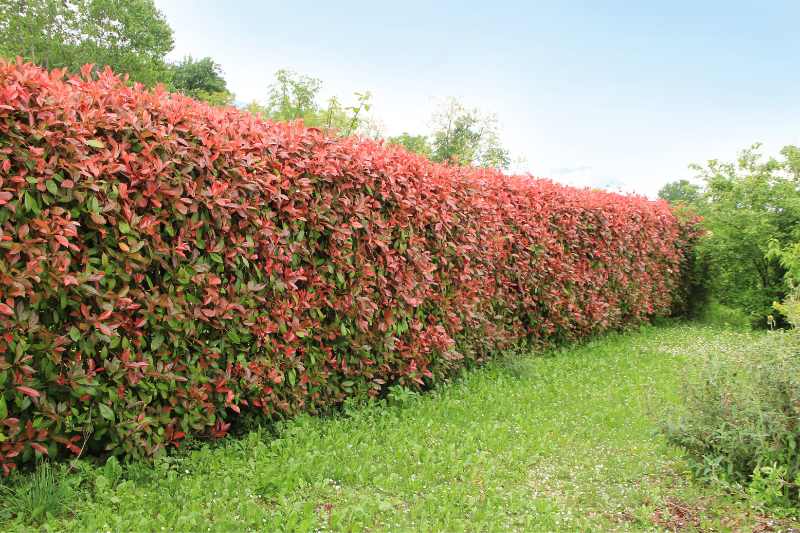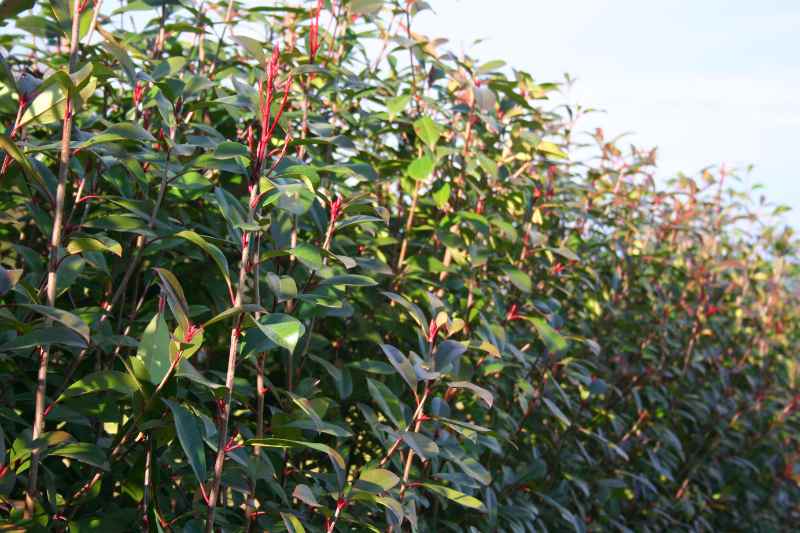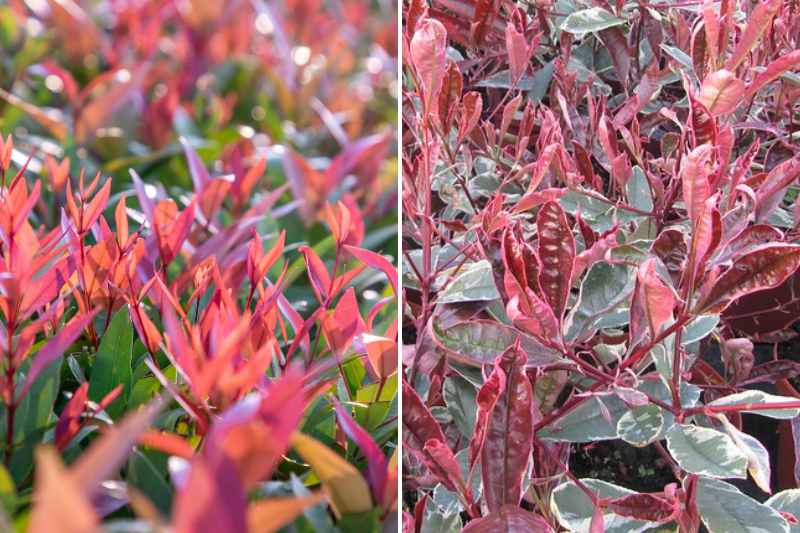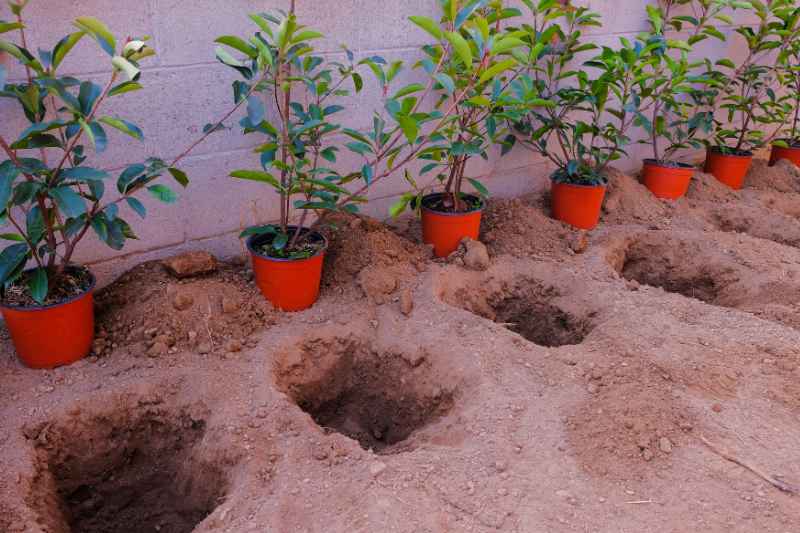Photinia, with its glossy leaves that shift from blazing red to deep green, is a popular choice for hedges thanks to its rapid growth and ease of maintenance. In this how-to sheet, we cover essential aspects such as site selection, soil preparation, planting, pruning, and care needed to ensure healthy, vigorous growth of your hedge.
For more on growing Photinias in general, see family sheet Photinia: planting, pruning and maintaining.

Why planting a Photinia hedge?
This type of hedge, popular for its glossy, colourful foliage, offers a unique aesthetic plus several other benefits. However, like any plant, Photinia has limitations. Below is an overview of advantages and disadvantages of a Photinia hedge to help decide whether it is ideal for your outdoor space.
Advantages of a Photinia hedge
- Aesthetic appeal: Photinia is notable for bright red young leaves in spring that later turn dark green. This change provides a dynamic, attractive display throughout year.
- Rapid growth: Ideal for those wanting to establish a hedge quickly, Photinia has fairly rapid growth, providing dense cover in little time.
- Easy maintenance: Once established, Photinia requires little maintenance. It is resistant to most diseases and can tolerate a range of soil and climate conditions.
- Privacy and protection: With its dense growth, a Photinia hedge offers excellent privacy and can act as an effective windbreak.
Disadvantages of a Photinia hedge
- Regular pruning required: To keep shape and encourage production of new red leaves, regular pruning is essential. This can represent a time commitment for gardener.
- Rapid spread: Its quick growth can be a drawback if space is limited or if hedge is not pruned regularly, leading to undesirable overspill.

Which Photinia varieties to choose for a hedge?
- Photinia x fraseri 'Red Robin': This is probably the most popular Photinia variety for hedges. Valued for its bright red young foliage that matures to dark green, 'Red Robin' is ideal for a medium to large hedge, reaching up to 3 metres in height.
- Photinia x fraseri 'Carré Rouge': This variety is naturally denser and more colourful than the (overly) classic 'Red Robin'.
- Photinia 'Pink Marble': Known for its variegated foliage with touches of pink, white and green, 'Pink Marble' adds a colourful, unique dimension to a hedge. This variety is also cold-hardy.
- Photinia 'Little Red Robin': If seeking a low hedge or border, 'Little Red Robin' is a dwarf form of 'Red Robin' and is perfect for these uses. It retains attractive red foliage of its larger parent in a more compact form.
- Photinia serratifolia 'Crunchy': This variety stands out for its glossy, undulate foliage. Young leaves are reddish-brown, contrasting nicely with dark green older leaves.

How to plant a Photinia hedge?
Choose a sunny or partly shaded site for your Photinia hedge. These plants appreciate light but can also tolerate light shade. Photinia prefers well-drained soil rich in organic matter. Work soil to a depth of at least 40–50 cm and incorporate compost or well‑rotted manure to enrich soil.
Planting is preferably carried out in autumn (October–November) to encourage root establishment, or in spring (March–April). Avoid planting during frost, extreme heat, or flowering.
Hedge planting
- Planting holes should be twice as wide as young plant container. Also, recommended spacing between Photinia young plants is about 1 to 1.5 metres. This spacing allows plants to develop fully and form a dense hedge.
- Gently remove Photinia from its container, taking care not to damage roots.
- Place young plant in hole, ensuring top of rootball is level with surrounding soil. Backfill with amended soil and firm gently.
- Immediately after planting, water each young plant thoroughly to establish good contact between roots and soil. Apply mulch around young plants to retain moisture and suppress weeds.

Required equipment
- Spade: For digging planting holes.
- Garden fork: Useful for loosening soil before planting.
- Stake (bamboo): to support young plants, especially in windy areas.
- Watering can: for deep watering after planting.
- Garden line: to ensure even spacing between young plants.
































Comments